Art World
Western Museums Have a Surplus of Art by White Men. Now Some Are Selling It Off to Correct Their Historical Biases
The work of three North American museums may offer a blueprint for how others can deaccession to diversify.
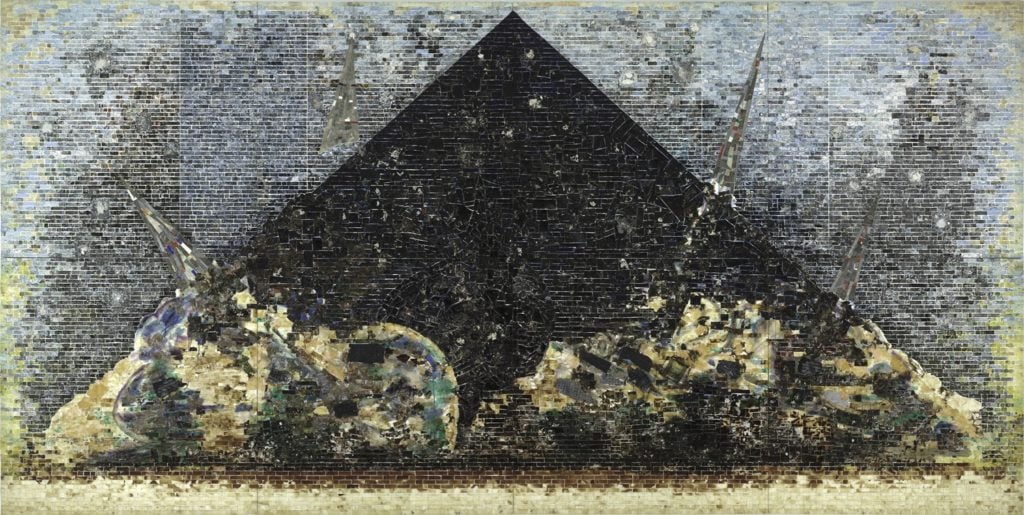
The work of three North American museums may offer a blueprint for how others can deaccession to diversify.

Tim Schneider

In late April 2018, the Baltimore Museum of Art made waves by broadcasting its plan to deaccession seven works by white, male postwar artists for the express purpose of diversifying its collection, with a special focus on using the sales proceeds to acquire works by African American and female artists. At the time, museum director Christopher Bedford defined the move as “an unusual and radical act.”
But just over a year later, the BMA’s move has become part of a growing trend. Two other major institutions, the San Francisco Museum of Modern Art and the Art Gallery of Ontario, have since announced similar initiatives that will be executed at auction, including via this month’s slate of sales in New York.
And while the exact objectives of these diversity-focused plans differ from institution to institution, interested observers now have reason to wonder how far and wide this rallying cry might be heard—and what its ultimate effects on museums and the market could be.

The Baltimore Museum of Art. Courtesy of the Baltimore Museum of Art.
For context, it’s important to compare and contrast the deaccession strategies across the three museums in question.
In Baltimore, museum leaders settled on a twofold plan. First, they deaccessioned five works by Franz Kline, Kenneth Noland, and other deceased, white artists to establish a new endowment for contemporary acquisitions, only about five percent of which can be spent annually. Then, the museum sold off two Warhol paintings to establish a separate acquisition fund to be cashed out within three to five years.
Except for one of the Warhols and a Robert Rauschenberg both tagged for private sale, the pieces were sold at Sotheby’s contemporary evening sale in New York last May. (While the cumulative hammer price reached just shy of $8 million, Bedford later hinted that a pre-arranged financial guarantee for the works gave the museum an even more lucrative war chest.)

Mark Rothko, Untitled (1960). Courtesy of Sotheby’s.
In June, the BMA announced that a portion of the proceeds had been used to acquire works by Jack Whitten, Lynette Yiadom-Boakye, Isaac Julien, Wangechi Mutu, the team of Mary Reid Kelley and Patrick Kelley, and Amy Sherald (who serves on the BMA’s board). The museum will debut much of the work acquired this fall.
In an interview with artnet News, Bedford emphasized that the process did not specifically target white male artists. It targeted “redundancy, which itself is a consequence of institutional bias over decades.” In each case, the BMA’s curatorial team selected works to deaccession because they were less compelling repetitions of other museum holdings, too cumbersome or condition-challenged to exhibit, or both.
SFMOMA did something similar when it announced in February that it would deaccession Mark Rothko’s Untitled (1960) to fund immediate acquisitions and to endow future ones, all “to broadly diversify its collection, enhance its contemporary holdings, and address art-historical gaps.”
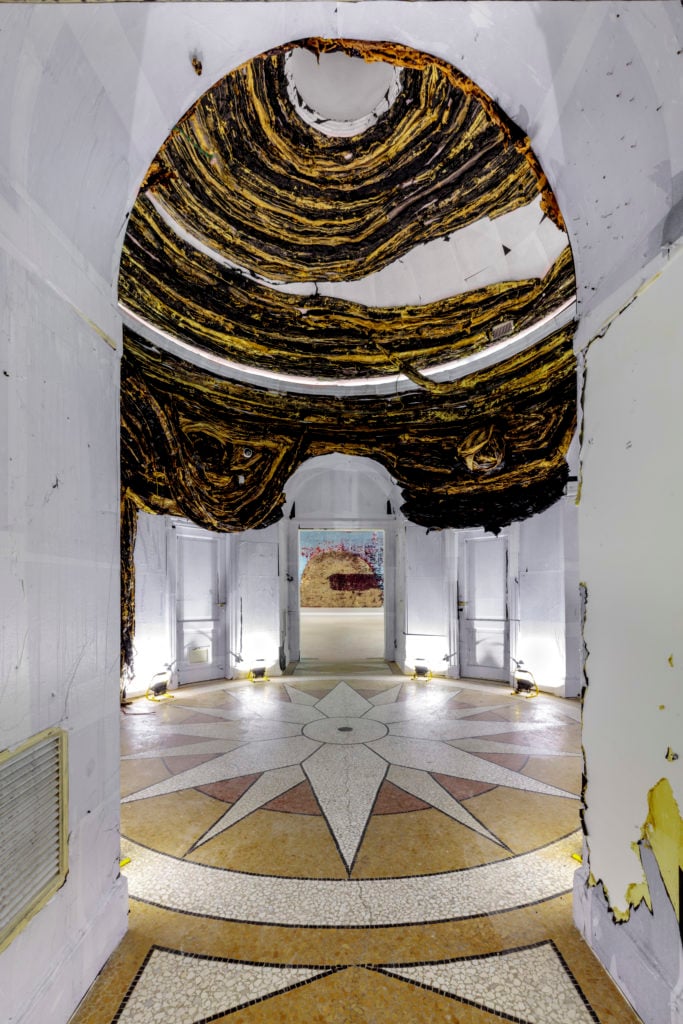
Installation view, Mark Bradford: Tomorrow Is Another Day. Venice Biennale, US Pavilion, 2017. Photo: Joshua White. Courtesy the artist and Hauser & Wirth.
Judged by curatorial leadership to be an inferior work compared to other Rothkos in the museum’s collection, Untitled now carries an estimate of $35 million to $50 million and will go on the block this week in Sotheby’s contemporary evening sale in New York. According to a statement by senior curator Gary Garrels, further details on the institution’s plans could be revealed as soon as May 29. (SFMOMA declined to comment for this story.)
Owing to its collecting history, the Art Gallery of Ontario has charted a somewhat different course. In April, it declared its intent to deaccession 20 pieces by A.Y. Jackson, a founding member of the Canadian modernist Group of Seven, through Heffel Fine Art Auction House before year’s end, with 17 works to be sold this May, and three more to be offered in the fall. According to an AGO spokesperson, the first 17 works could raise upwards of CAD 600,000 (nearly $450,000).
The Jackson works were all included in the institution’s Indigenous and Canadian collection, one of its five core collecting areas. Rather than use the sales proceeds to diversify holdings in the other four areas, the goal is to rebalance the distribution within this same facet of the collection.
“There’s a story we want to tell about the nature of Canadian art and how it’s unfolded over the many hundreds of years here, and to do that really effectively for our broad public, we need to have some key works by indigenous artists that we don’t have,” says Julian Cox, the AGO’s deputy director and chief curator.

Exterior view of the Art Gallery of Ontario. Courtesy of Wikimedia Commons.
There is a longer history here. When Bedford was the director of the Rose Art Museum at Brandeis University between 2012 and 2016, he benefited from an endowment for acquisitions courtesy of his predecessor, Michael Rush, who deaccessioned a work by American landscape painter Childe Hassam because it fell outside the museum’s collecting focus. The painting, Sunset at Sea, sold at Christie’s New York in November 2007 for over $3.7 million with buyer’s premium.
Years later, Bedford strategically deployed some of those funds to acquire works by Howardena Pindell, Jack Whitten, Al Loving, and Mark Bradford, among other artists of color.
“This was substantially before there was a more consensus turn in the direction of those artists,” Bedford says. But by the time he arrived at the BMA with the goal of replicating the plan on a grander scale, examples by these artists and others were much more expensive to acquire.
“I looked at the endowed funds that we had to buy postwar art and realized very quickly we were not competitive at all,” he says. “So it seemed really apparent to me and the leadership at the museum, as well as the board, that we needed to take some radical action to address that, which led to our deaccessioning.”
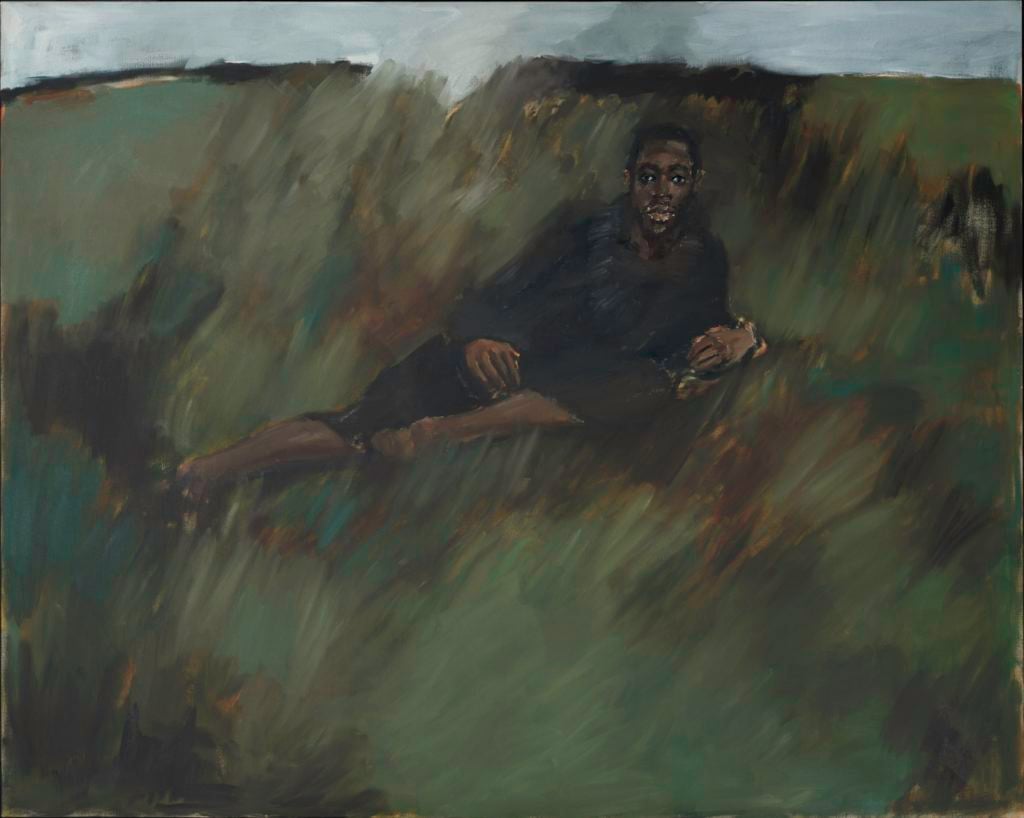
Lynette Yiadom-Boakye’s 8am Cadiz (2017). Courtesy of the Baltimore Museum of Art.
At the AGO, “we’ve had a deep commitment to both showing and acquiring work of women artists for several years now,” says Cox, who moved north after about 25 years working in US museums. He points out that the museum has been strategically deaccessioning “fairly steadily” across its five collecting areas since 2014, when the institution sold Bernardus Johannes Blommers’s Building Sandcastles.
“I think there’s a different kind of environment in Canada than in the US, and I think I can definitely speak to that having worked in a US context for so long,” he says. “In a number of ways, actually, people and the discussion are way ahead in Canada.”
In the US, breaking from the white male canon has been an explicit goal of some regional and university museums. A study conducted by artnet News and Art Agency, Partners found that about 21 percent of the works acquired by the Nasher Museum of Art at Duke University over the past decade (132 of 628 pieces) were made by African American artists. The average in 30 major American museums over that same period hovers beneath 2.5 percent.
Smaller schools serving distinct communities have an even longer history of collecting in widely under-represented areas. Steven Nelson, professor of African and African-American art at UCLA, points to museums at historically black colleges and universities, such as Spelman College and Howard University, which have been consistently buying works by artists of color for years because they speak directly to the schools’ constituents.
“With questions of diversity, it’s so local, and so one has to look at the local context to see what diversity actually means,” Nelson says. “It’s going to be different in Jackson, Mississippi, than it is in Rochester, New York.”
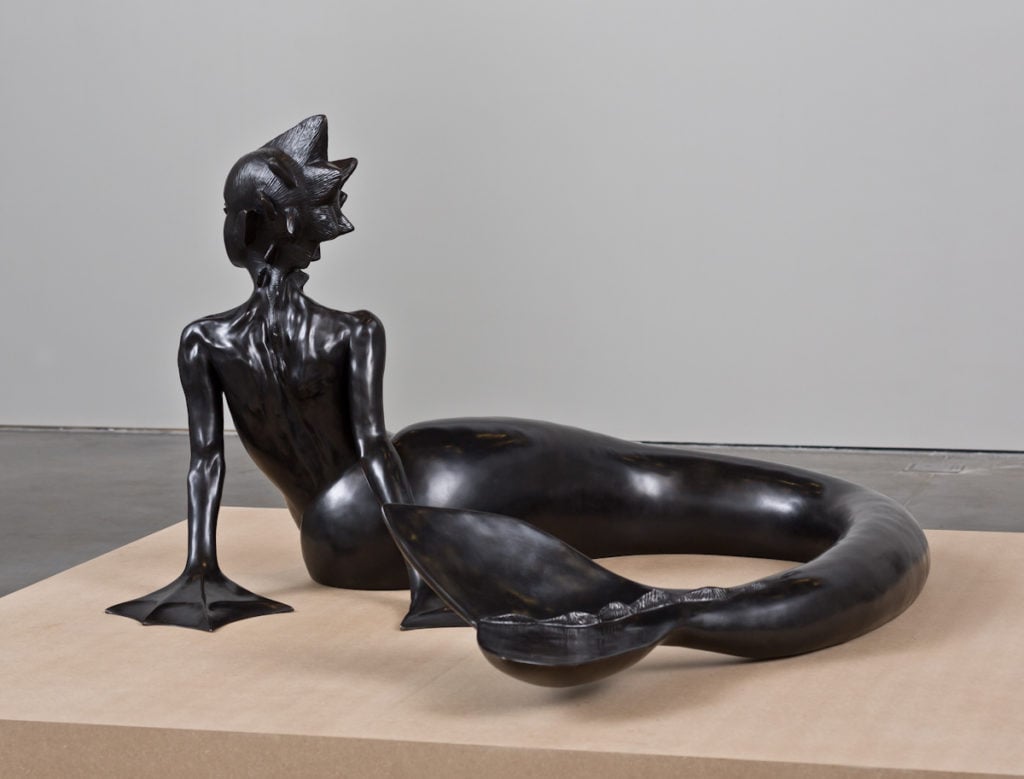
Wangechi Mutu, Water Woman (2017). Courtesy of the Baltimore Museum of Art.
To proponents and skeptics alike, a central question about deaccessioning to diversify concerns how far—and how quickly—the idea can spread through the museum ecosystem.
“People are of course going to have a knee-jerk response: If these museums are doing it, then everybody is going to do it, as if the floodgates are going to be breaking,” Nelson says. “I don’t see that happening.”
He points out that some institutions—such as the National Gallery of Art—prohibit deaccessioning in their charters, forever forcing them to find alternative strategies for revising their collections.
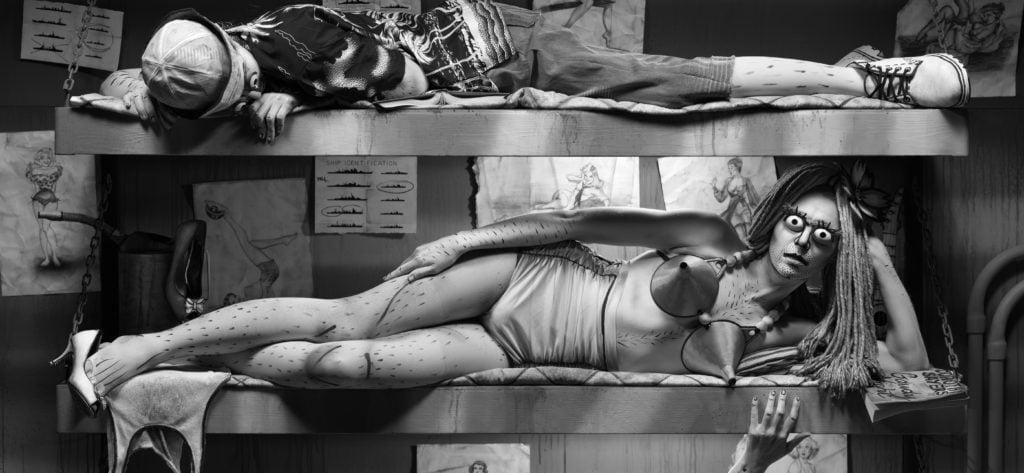
Mary Reid Kelley and Patrick Kelley’s Gaudy Night (2017). Courtesy of the Baltimore Museum of Art.
Even for museums that can theoretically deaccession to diversify, size and resources matter. The BMA and the AGO owned enough old-guard canonical works to sell without impoverishing their collections; few institutions are so privileged.
And this situation affects living artists in real ways. Mary Reid Kelley, whose work, along with that of her partner Patrick Kelley, was purchased by the BMA with deaccession funds, told artnet News that the sales proceeds comprised “a significant amount” of the duo’s income last year, which stabilized their lives and enabled them to keep working.
“A sale like this, we can probably stretch for six months,” she says. “So we’re talking about livelihood, and I’m sure we’re not the only ones.” This is why Reid Kelley pushes back against critics who decry the works by late greats “lost” to the public due to diversity-focused deaccessioning, especially when these works are judged to be duplicative by curators.
“If a younger artist with less of a market and less support makes six paintings in a year instead of 12, or makes a film every three years instead of every 16 months, then that’s a lot of work that we’re losing from a younger generation that’s really struggling on every front… compared to their parents’ or grandparents’ generation, who were able to accumulate more capital or have more stability than younger people. And this is affecting the art that does or doesn’t get made.”
But even after such progressive contemporary works become part of a museum’s collection, there are still issues to be addressed. Nelson estimates that the average large institution can only exhibit about two to four percent of its permanent collection at any given time—raising the question of actual change, versus the illusion of progress.
“If you’re diversifying a collection, is that work going to be on display, or is it going to be in storage?” he asks. “It’s one thing to acquire these works, but if they’re not going to be on view, then what is it we’re really doing? You can have a huge impact with just a few works, if they’re actually out in the gallery.”
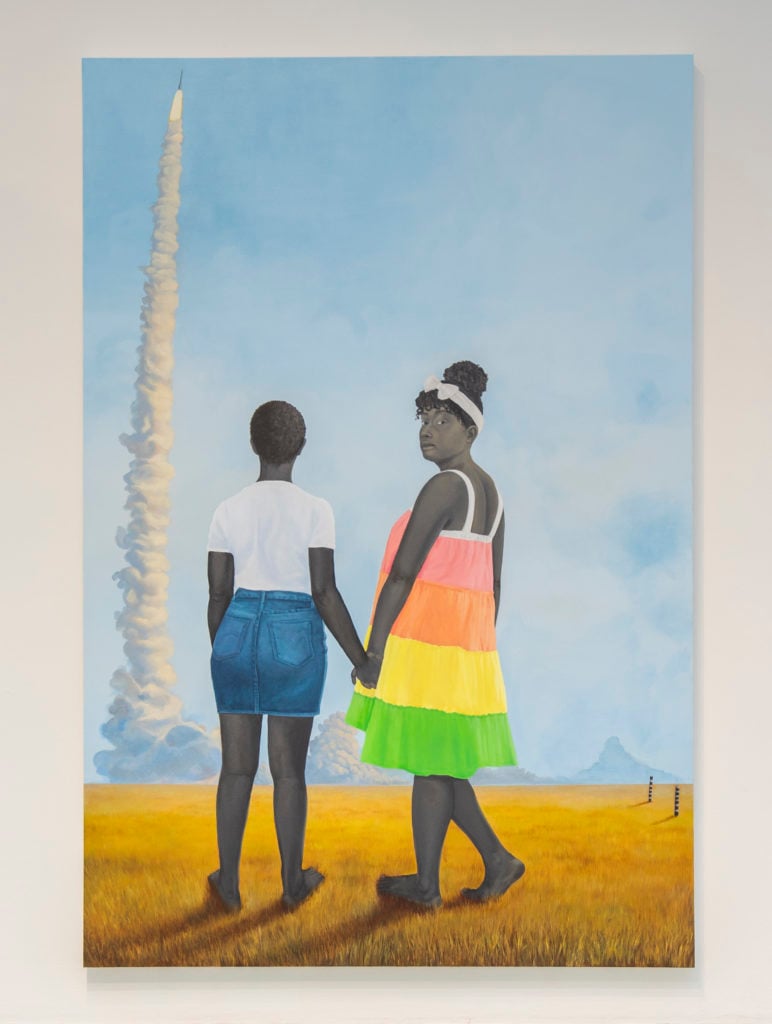
Amy Sherald’s Planes, rockets, and the spaces in between (2018). Courtesy of the Baltimore Museum of Art.
At the BMA, deaccessioning to diversify is only part of the plan. The idea is to inaugurate “broad structural change” at the museum in terms of exhibitions, public programs, staff, and at the board level, Bedford says.
A revised collection “has to be connected to four or five other commitments to actually be transformative within the context of the larger institution,” he explains. “So one way to shorthand that for the BMA is to ask, ‘What does it mean to build a vibrant, dynamic, vital, black-majority museum for a black-majority city in 2019?’”
Cox says the AGO has been committed to a similar broad-spectrum approach for several years—one that goes beyond its collection to encompass exhibitions, public lectures and symposia, board membership, and most recently, its admissions policy.
Starting May 25, the museum will launch a one-year initiative to eliminate entry fees for anyone age 25 and under, as well as to stop charging for special exhibitions. Although the price of general-admission tickets will rise for older adults (from CAD 19.50 to CAD 25), all visitors will be able to purchase a one-year membership for just an additional CAD 10, making future visits gratis.
In comments to ARTnews, AGO director Stephen Jost positioned the move as a way to connect with everyone from young people to Mandarin-speaking suburbanites to all other demographics besides “upper-middle-class people who’ve visited the institution in the past year.”
But changing institutions and redressing historical imbalances is an always-incomplete task. And thus far, in the US at least, the conversation has revolved largely around African American and women artists, meaning that there is still work to be done to make sure Latinx, Native American, and other communities are equitably represented in museum collections, staffs, and more.
“I don’t think there’s an end to the work,” says Bedford, noting that the BMA is spending this year reviewing the rest of its collection, beyond the department of Modern and contemporary art, with the same radically inclusive eye. “It’s a relentless drive to achieve relevance.”
And if he and others can help it, these types of structural changes will eventually cease to be news, and will instead become standard institutional thinking.
“Always thinking about that topic, always thinking about inclusion, should be business as usual,” Nelson says. “My dream is for it to become commonplace, that it’s just the thing we think about.”